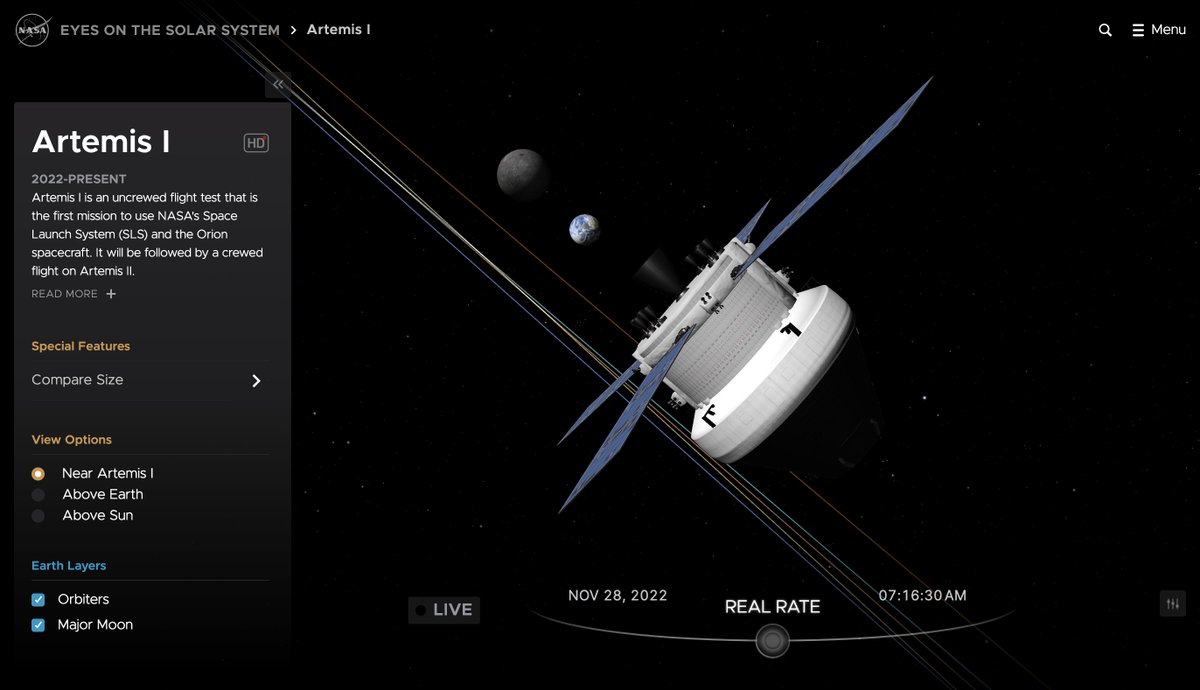
In 1977 NASA's robotic Voyager 1 spacecraft captured the first full view of Earth & the Moon together in a single frame. Today @NASA_Orion, designed to carry astronauts to the Moon, sent its own view of the Earth-Moon system. Follow along with #Artemis I: blogs.nasa.gov/artemis/ 



@NASA_Orion You can recreate both moments in our "Eyes on the Solar System" experience: eyes.nasa.gov/apps/solar-sys… 



And here's a high-resolution view of the scene. Details: images.nasa.gov/details-art001… 

• • •
Missing some Tweet in this thread? You can try to
force a refresh




















